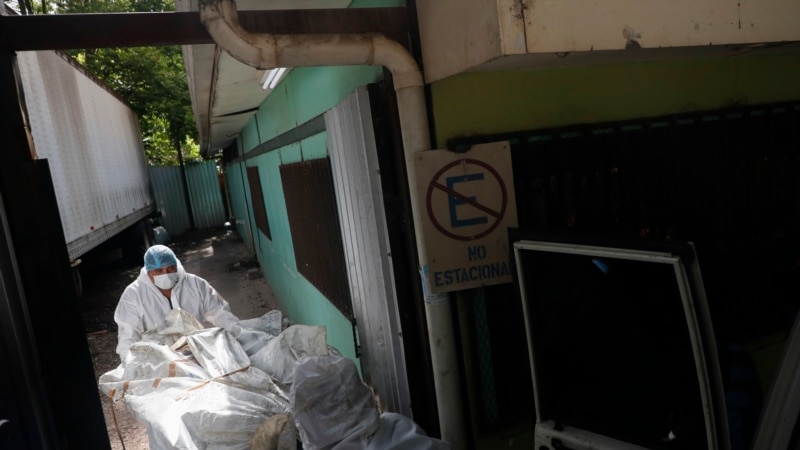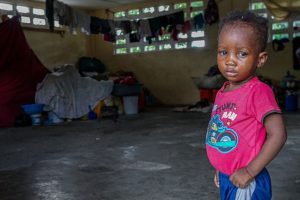Several female inmates came out of their cells, led the prison guards out, went to a wing where prisoners from a rival gang were, began murdering them, and then set fire to it, turning the main women’s prison in Honduras into the scene of an attack. a massacre in which at least 46 women diedreported Wednesday the Public Ministry and Forensic Medicine.
Videos released by the government from inside the prison located about 50 kilometers northwest of Tegucigalpa showed several pistols, many machetes and other bladed weapons found after the riot.
Honduran President Xiomara Castro affirmed that the riot in the town of Támara was “planned by gangs in view and with the patience of security authorities” and after announcing “drastic measures” she dismissed the Minister of Security, Ramón Sabillón, and replaced him with Gustavo Sánchez, who until now was director general of the National Police.
The inmates had been complaining for weeks that gang members were threatening them. According to authorities, the gang followed through on those threats Tuesday. Early in the morning the attackers murdered the women. Many of them burned to death and the rest were shot or stabbed, said Sandra Rodríguez Vargas, deputy commissioner for Penitentiary Centers.
Juan López Rochez, chief of operations for the National Police, explained to The Associated Press that the Barrio 18 gang members left their cells, inexplicably open, went to their rivals’ section and “began to shoot inside.”
“It seems, it is an investigation to be confirmed, that they used oil to set it on fire,” he added. Several of the inmates managed to get out and were attacked with bladed weapons.
The fire left cell walls blackened and bunk beds reduced to twisted heaps of metal.
Rochez added that some twenty weapons were seized -among them an AR-15 rifle, two Uzis and two fragmentation grenades- and said that they are investigating how these weapons got inside the prison -which housed more than 900 women- and the role played by the agents who guarded the place. “Obviously there must be human errors, we are investigating them.”
The riot is the worst tragedy at a women’s detention center in Central America since 2017, when 41 girls from a shelter for troubled youth in Guatemala died after setting mattresses on fire to protest the rape and other ill-treatment they suffered in that institution.
The deadliest event in a Central American prison in a century also occurred in Honduras in 2012 at the Comayagua penitentiary, where 361 inmates died in a fire.
At least seven inmates were transferred to a hospital in Tegucigalpa for gunshot wounds and stab wounds, authorities from the Hospital Escuela reported. On Tuesday night, the spokespersons for the health center said that two had been discharged and the rest were stable.
It was a foretold tragedy, said Johanna Paola Soriano Euceda, who was waiting outside the Tegucigalpa morgue for news about her mother, Maribel Euceda, and her sister, Karla Soriano. Both were being tried for drug trafficking, but were being held in the same area as the convicted prisoners.
Soriano Euceda recounted that his mother had told him on Sunday by phone that “the girls (members of the Barrio 18 gang) were scattered, who live fighting with them and from then on we did not speak again.”
Another woman, who did not want to give her name for fear of reprisals, said she was waiting for news about her friend Alejandra Martínez, 26, who is being held in module one and accused of robbery.
“She told me on Sunday, the last time I saw her, that the 18 (from the Barrio) had threatened them and that if they did not hand over a relative they were going to kill them,” she said.
Gangs sometimes require their victims to “turn over” a friend or relative by giving their name, address, and description so that gang members can later find them and kidnap, rob, or kill them.
Officials described the killings as a “terrorist act” and acknowledged that the gangs had essentially taken over some parts of the prison.
Julissa Villanueva, Vice Minister of Security and head of prisons, suggested that the riot began in response to government actions to free prisons from the power of organized crime and assured that they will “under no circumstances allow the attack or the sabotage” by “organized crime that has hijacked the prison system of this country”.
“We are not going to give in,” he stressed in a televised message after the riot. “We are not going to negotiate.”
As Joaquín Mejía, an academic from the Reflection, Investigation and Communication Team of the Jesuits in Honduras, explained to AP, two of the biggest problems in Honduran prisons are the abandonment they suffer from the authorities and the internal control capacity of the prisons. inmates.
Although the Castro government announced an intervention to change this situation, the Támara riot evidences the failure of the efforts to purify the prison police and prevent the entry of drugs or weapons into the prisons.
Meanwhile, the grim task of trying to identify the corpses, some charred, continued.
On the outskirts of the morgue, nervousness spread as some bodies in white bags were transferred from a container to an indoor area where autopsies were carried out and other already identified bodies began to be delivered to the families. Some attended by health personnel to be able to cope with the moment.
Tuesday’s riot could increase pressure on Honduras to emulate the drastic zero-tolerance, no-privilege prisons established in neighboring El Salvador by President Nayib Bukele.
Although the repression of gangs in El Salvador has led to human rights violations, it has also proved immensely popular in a country long terrorized by street gangs.
“One of the serious dangers is the ‘bukelization’ of the country’s security policy, with all that this implies,” said Mejía.
Connect with the Voice of America! Subscribe to our channel Youtube and activate notifications, or follow us on social networks: Facebook, Twitter and Instagram.














